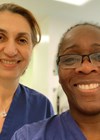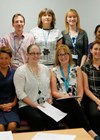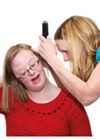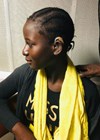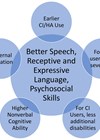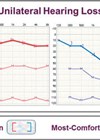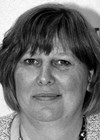Audiology features
Global audiology during COVID-19
The COVID-19 pandemic has affected, and in some areas, put a complete hold on, audiology practice around the world. In April 2020, during the peak of the pandemic for many regions, our audiology Global Ambassadors provided their reports from their...
Are you sitting comfortably? Then we shall begin
Paediatric Audiologist, Natalie Stephenson, shares her experience working with children and young people, the impact of lockdown and the value of patient-centred care, throughout the COVID-19 pandemic. Am I glad that I know The Gruffalo off by heart? Yes, I...
The power of the multidisciplinary team in paediatric cochlear implant assessment
Marette, Kate and Justine from the Birmingham Paediatric Centre give a detailed insight into how their team works together to assess children and young people for potential cochlear implantation. Cochlear implants and the specialist MDT The multidisciplinary team in cochlear...
MDT assessment of children and adults with implantable acoustic devices (IADs)
Abi Asher, Clinical Lead for the IAD programme in Cambridge describes how hearing care professionals work together to make the best recommendation for the patient, in turn helping navigate through the various devices now on offer. Multidisciplinary teams (MDTs) are...
Multidisciplinary approach to managing individuals with trisomy 21
Michelle Chung and Narad Mathura outline the Down syndrome one-stop clinic; a multidisciplinary clinic introduced at the Children & Young Persons Audiology Centre (CYPAC) at Guys and St Thomas’ NHS Foundation Trust for children and young people with Down syndrome....
MDT clinics for adults with learning disabilities and hearing loss
Healthcare providers can have limitations and challenges providing optimum care for patients with intellectual disabilities. Siobhan Brennan and Susanna Goodhart highlight key professionals and carers who may be instrumental when trying to deliver good management and care along with other...
Sound Seekers: audiology in the developing world
Kavita Prasad, the current CEO of Soundseekers, is an inspirational woman in a leadership role within the audiology world. Here, she gives us an overview of the scope of the charity and the ways in which they improve the lives...
Hearing aids 2019: today’s technology
High-end or basic hearing aids: does the technology level make a difference? Catherine Palmer shares the current evidence base and suggests where hearing healthcare professionals can make the most impact. The most common complaint from individuals with mild-to-moderately severe hearing...
Hearing aid microphone considerations for binaural hearing: When to select natural or aggressive directional microphone technology?
Should I use omni-directional or fixed directionality? Does it make a difference if I’m fitting a unilateral hearing loss? Mark Laureyns discusses the current evidence on directional microphones and provides practical advice on the systems and when to employ them....
Hearing care systems in Europe – can we do more?
52 million Europeans experience hearing loss but many don’t find their way to professional hearing care. Lidia Best looks at strategies to improve the uptake of amplification at a national level [1]. With rising numbers of people experiencing hearing loss,...
Misophonia – a psychological disorder?
Historically, there has been disagreement regarding misophonia classification, with questions surrounding whether it is a psychological or physiological disorder. Dr Jennifer Jo Brout discusses misophonia classification, research, and guidelines for the role of the psychologist. Photo courtesy of Pexels. What...
Theory of mind and deaf children
Theory of mind relates to a person’s ability to understand the perspectives of others, to be aware that they may differ from one’s own perspectives and the ability to use this knowledge to navigate social situations. Dr Helen Chilton explores...




